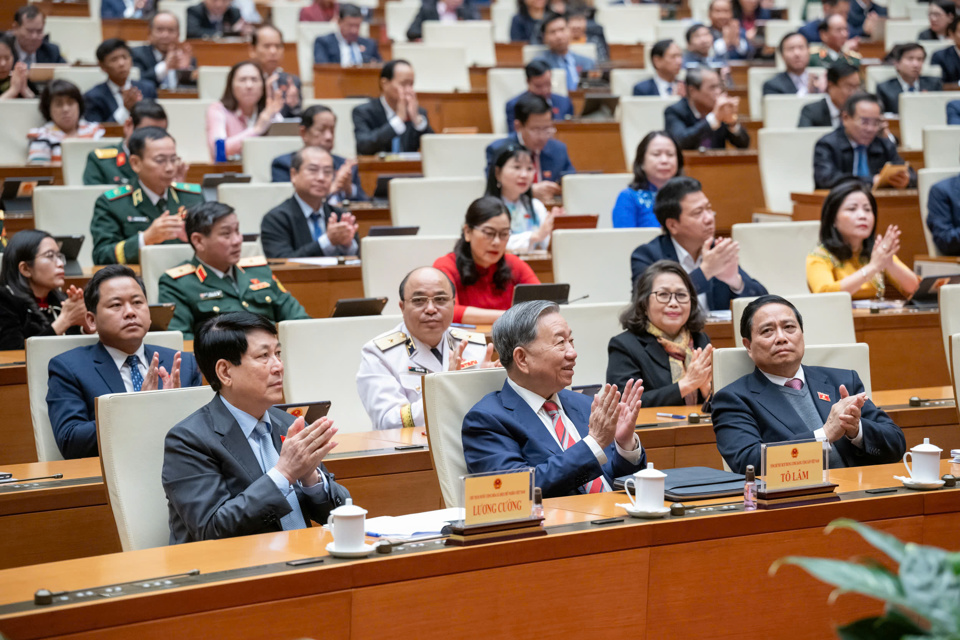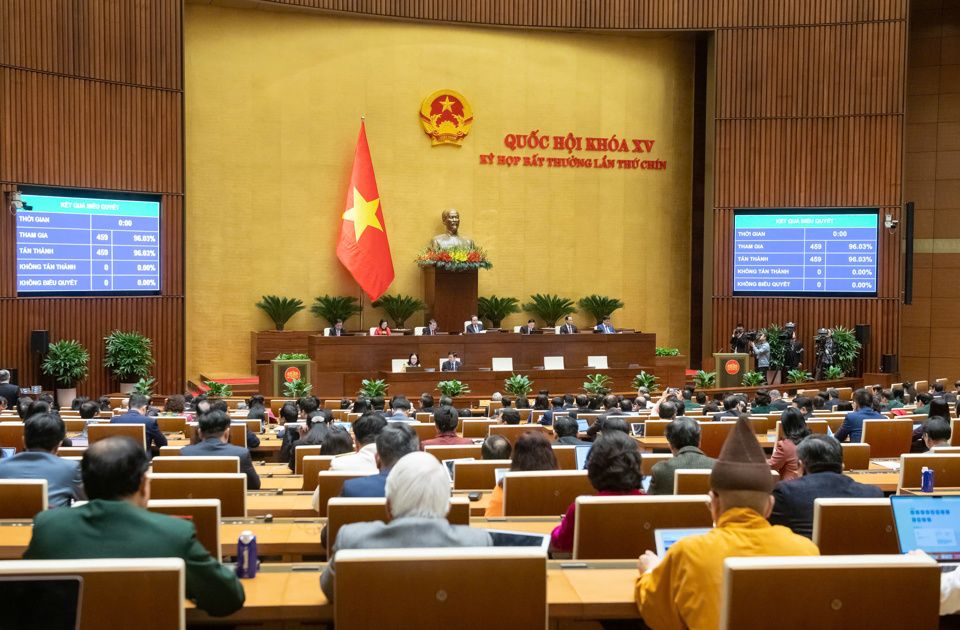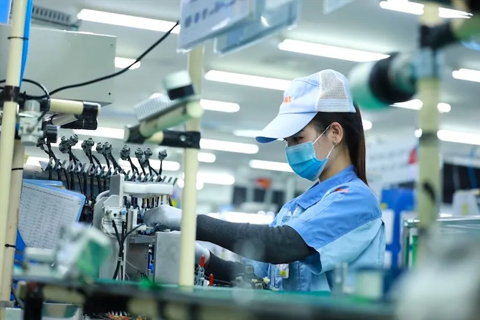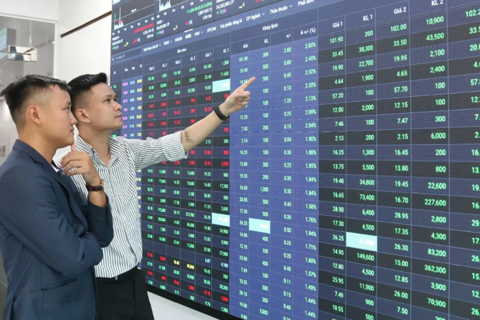Vietnam's economy could surpass US$500 billion this year
If Vietnam’s GDP exceeds $500 billion this year, the country’s economy could rank between 31st and 33rd in the world.
Vietnam's GDP target for 2025 has been raised to over 8%, up from last year’s 6.5-7%, bringing the size of the economy past $500 billion.
| Party and country's leaders at the session. Photos: quochoi.vn |
The revised target was outlined in an updated economic and social development plan passed by the National Assembly on February 19, with nearly 97% of deputies voting in favor.
Under the new plan, Vietnam’s GDP growth target for this year is set at over 8%, an increase of 1-1.5 percentage points from the 6.5-7% target approved late last year and one percentage point higher than the 7.09% achieved in 2024. This adjustment is aimed at accelerating economic growth to double-digit levels in the coming years, supporting Vietnam’s goal of becoming a high-income country by 2045.
Vietnam’s economy is projected to surpass $500 billion in 2025, up 5% from last year. The GDP per capita is expected to exceed $5,000. Inflation is also forecast to rise to approximately 4.5-5%. If Vietnam’s GDP exceeds $500 billion this year, the country’s economy could rank between 31st and 33rd in the world.
To achieve the new growth target, the National Assembly has instructed the government to improve the legal and regulatory frameworks, avoid overly restrictive policies, and expedite key infrastructure projects. Major transport infrastructure projects scheduled for completion this year include Long Thanh International Airport, Lach Huyen Port, the new Terminal 3 at Tan Son Nhat Airport, Terminal 2 at Noi Bai Airport, and the construction of Lien Chieu Port in Danang.
The government has also been tasked with accelerating plans for financial centers in Ho Chi Minh City and Danang, as well as establishing free trade zones and border economic areas. More localities are expected to be entitled to special policy mechanisms, with Ho Chi Minh City, Hanoi, and Danang already enjoying them, to unlock economic potential.
Approximately $3.3 billion in public investment from additional revenues and budget savings in 2024 will be allocated to key projects, including expressways and coastal roads. Meanwhile, government agencies are expected to cut regular expenditures by about 10% and use increased budget revenues from 2024 to invest in the Lao Cai-Hanoi-Haiphong railway.
If necessary, the fiscal deficit could be raised to 4-4.5% of GDP (from the current 3.8%) to mobilize additional resources for development. Public debt, government debt, and external debt may approach or slightly exceed the warning threshold of 5% of GDP.
The National Assembly emphasized the need for strong and transparent mechanisms to address bureaucratic inefficiencies and ensure accountability in public service. It also stressed the importance of fostering an environment where civil servants are encouraged to innovate and take initiative.
| Overview of the session. |
With an 8% GDP growth target, the private sector is expected to contribute approximately $96 billion out of the total $174 billion in social investment. Although private sector investment has been growing at an average of 7-9% per year, recent trends indicate a slowdown.
To counter this, the National Assembly has directed the government to introduce policies that support private enterprises, particularly large domestic firms. Meanwhile, state-owned enterprises will focus on major projects that drive economic and social development while strengthening ties with the private sector.
In addition to improving the regulatory framework for financial markets, securities, technology, and real estate, the government needs to address bottlenecks in these sectors.
Vietnam’s economy continues to rely on traditional growth drivers, including investment, consumption, and exports. This year, public investment is set at nearly $35.1 billion, while total retail sales of goods and services are expected to grow by at least 12%.
However, alongside traditional growth drivers, the government is urged to develop new economic engines such as the digital economy and green economy. With the rise of emerging technologies, including semiconductors, artificial intelligence, and big data, the National Assembly has called for groundbreaking policies to ensure scientific and technological autonomy. It also stressed the need for high-quality workforce training programs that meet international standards.
The government must also implement policies to encourage foreign direct investment (FDI) enterprises to transfer technology and source more components, materials, and services from Vietnamese suppliers. This would help domestic firms integrate more deeply into global value chains.












